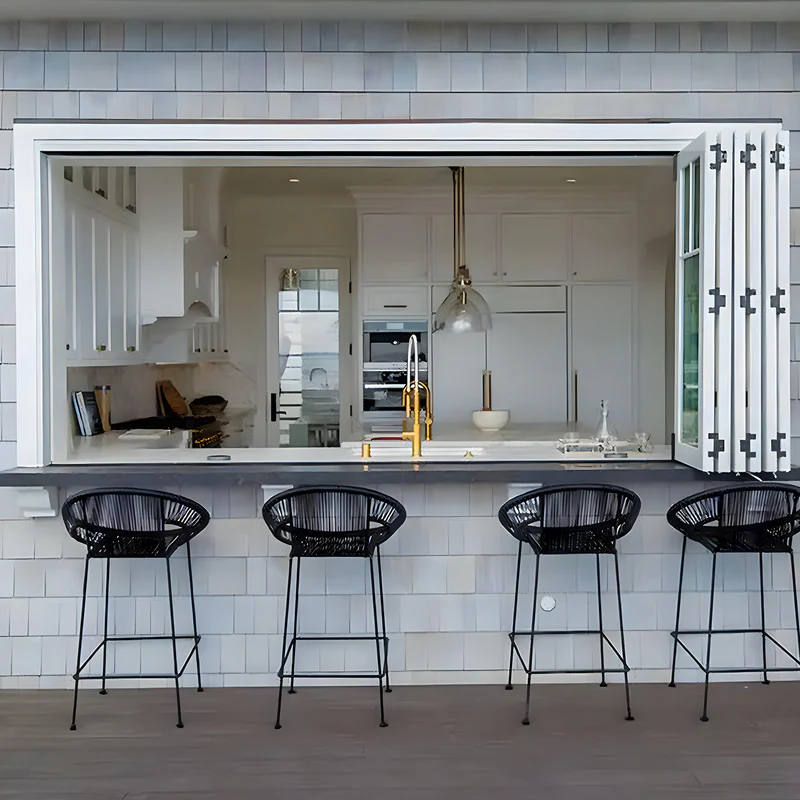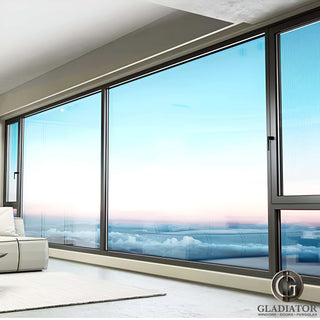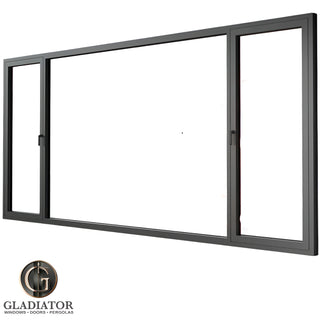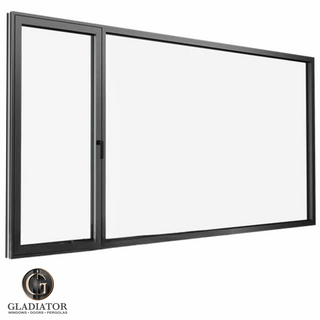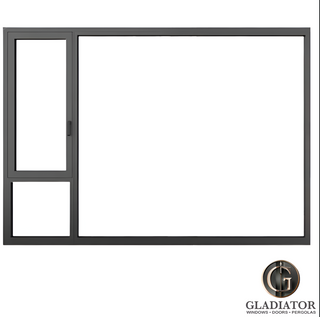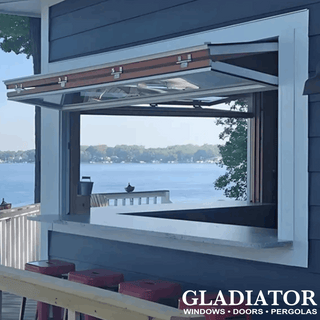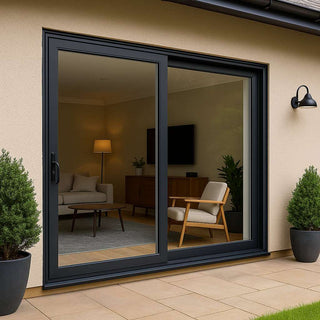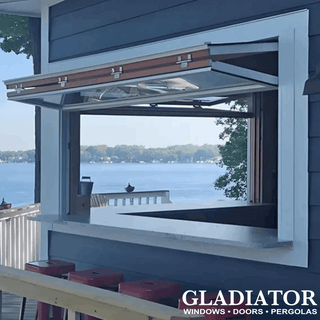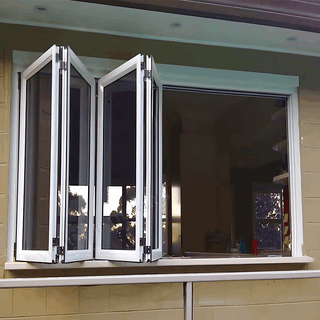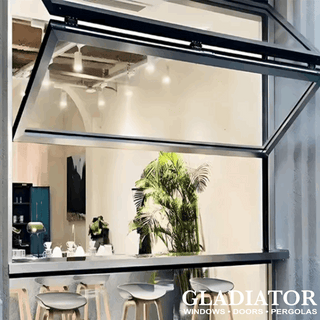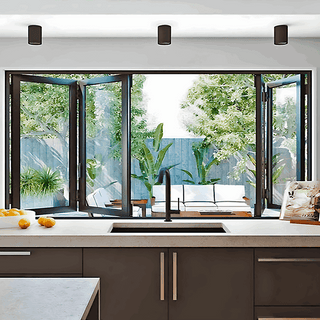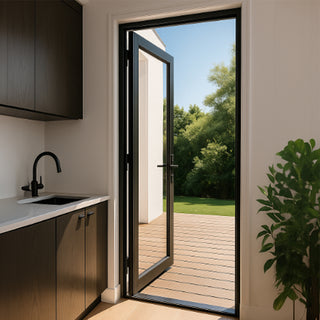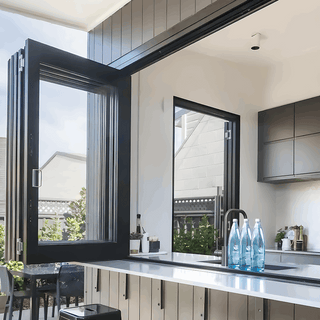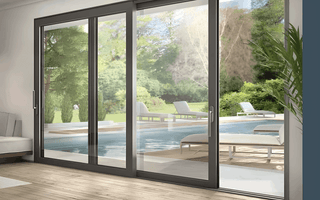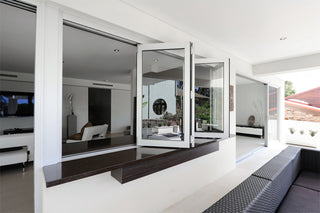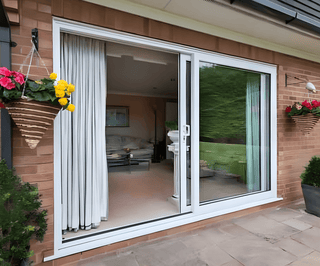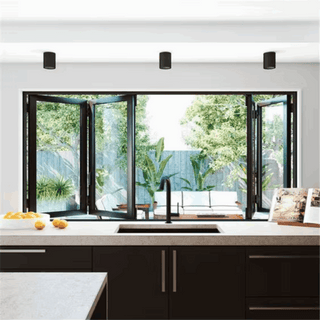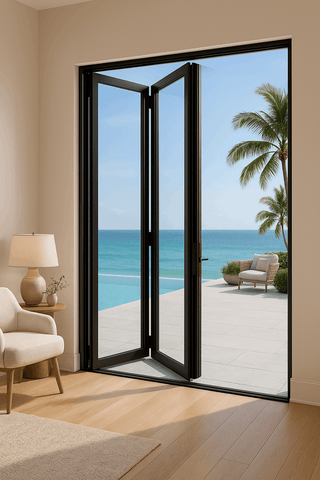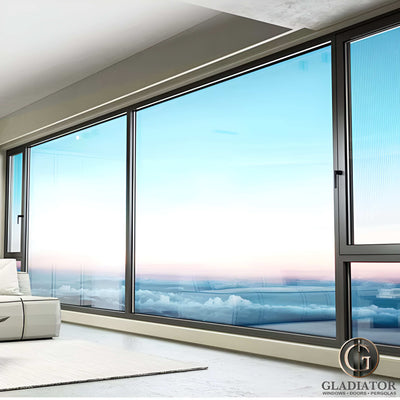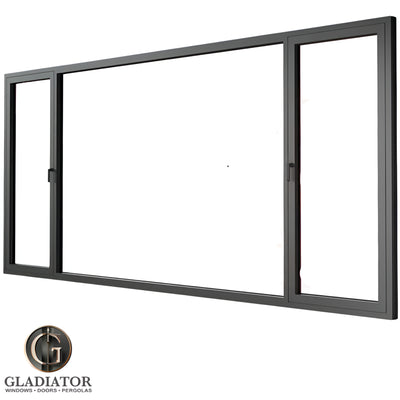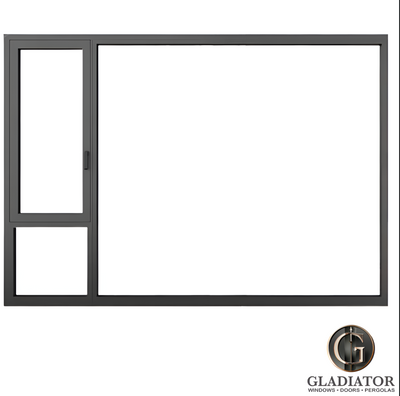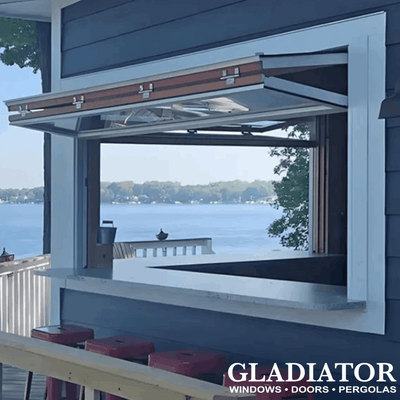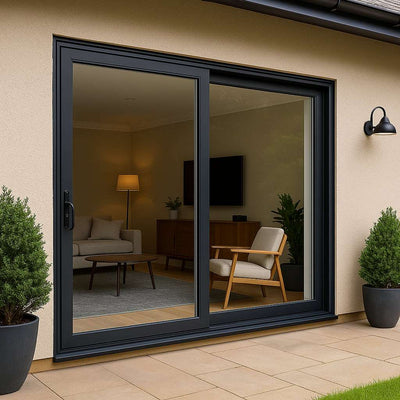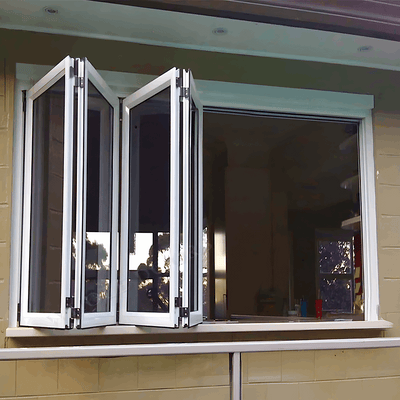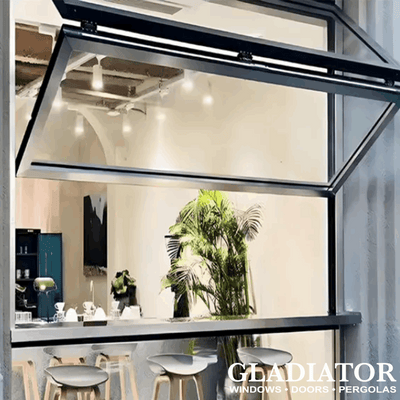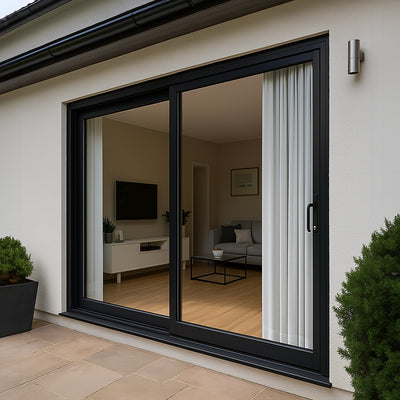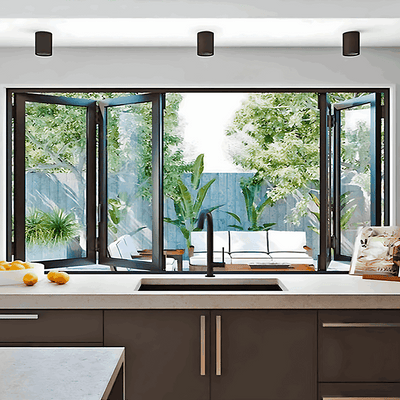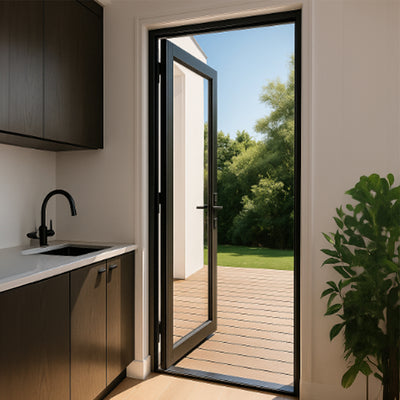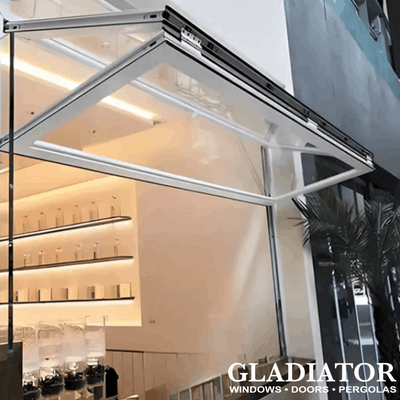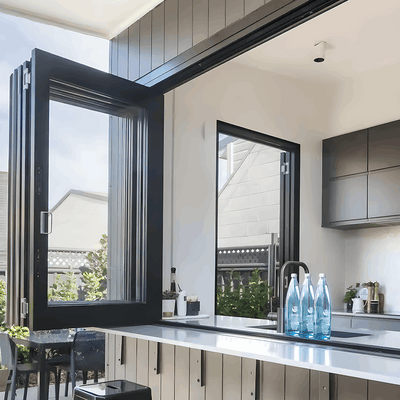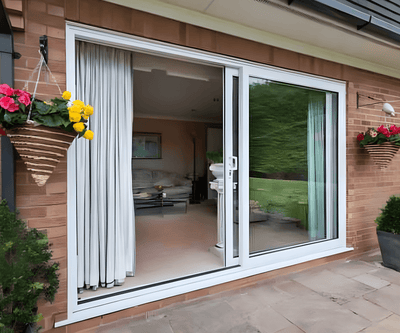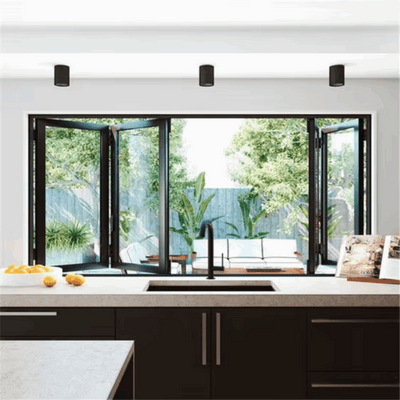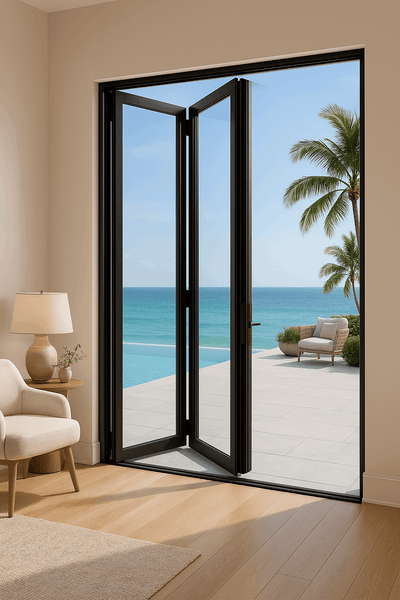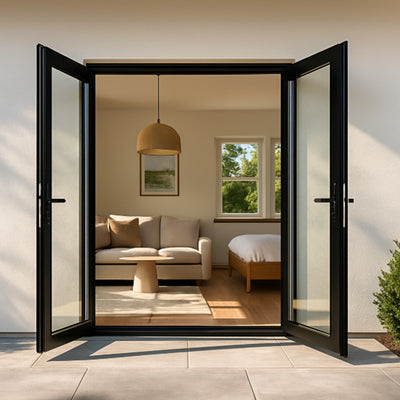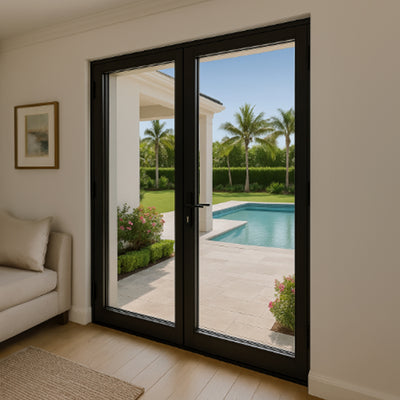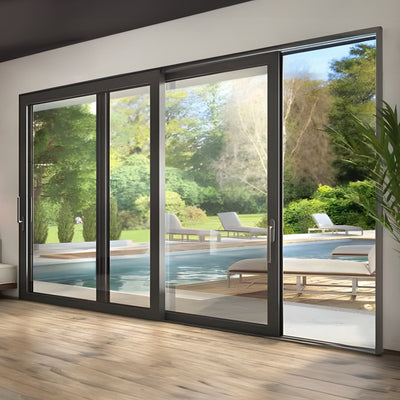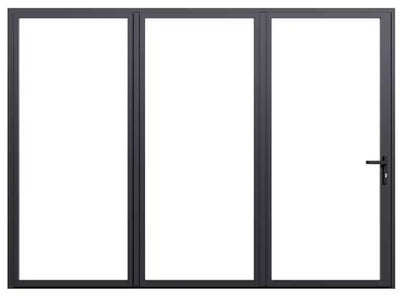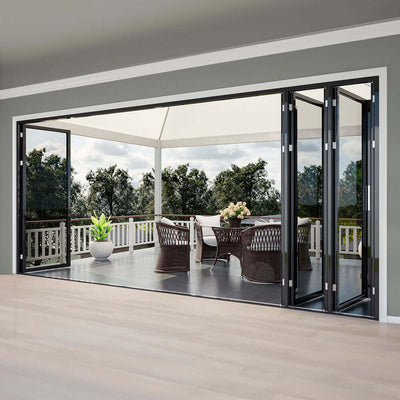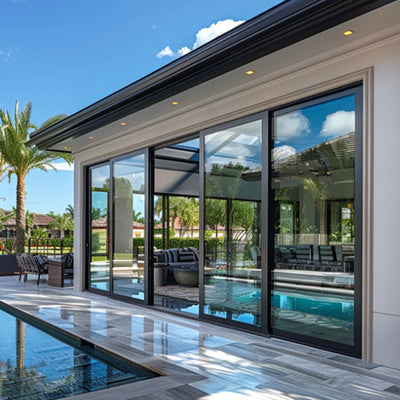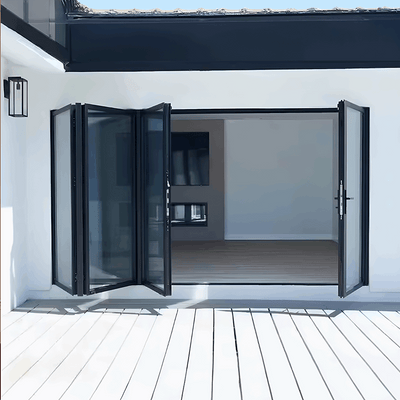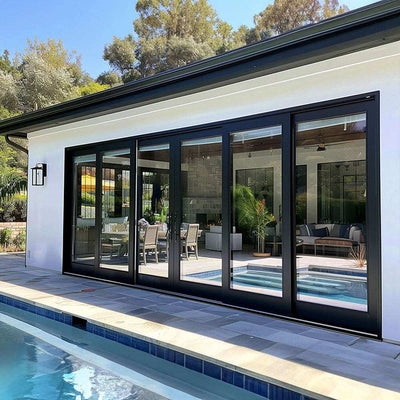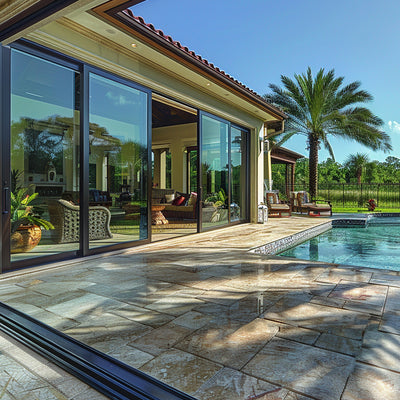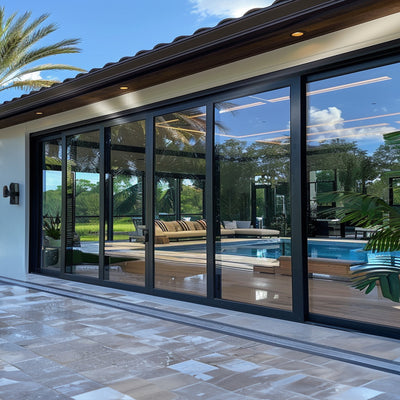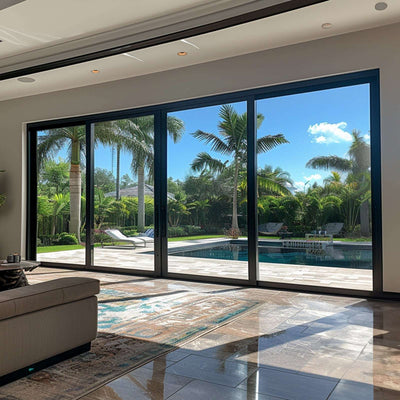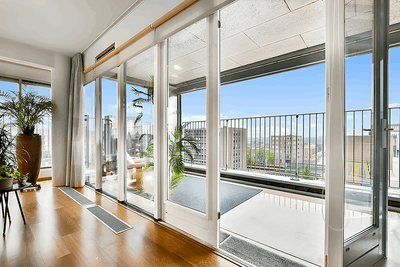Why Your Sliding Glass Door Deserves Better Care
Let's be honest, sliding glass doors often get overlooked. Most homeowners only address them when problems arise, like sticking, jamming, or drafts. But regular maintenance is crucial for more than just smooth operation. It's about preserving your investment, improving energy efficiency, and ensuring your door performs well for years to come. Properly maintained doors contribute to a more comfortable, secure, and valuable home.
The Hidden Costs of Neglect
Small issues, if ignored, can snowball into expensive problems. A slightly misaligned track, for instance, can wear down rollers, leading to costly replacements. Worn weatherstripping can create drafts, increasing energy bills and making your home less comfortable. What starts as a minor maintenance task can quickly escalate into a major repair or even a full door replacement.
The Benefits of Proactive Maintenance
Regular maintenance offers substantial advantages. Routine cleaning and lubrication ensure smooth operation and prevent premature wear. This not only extends the door's lifespan but also reduces the chance of unexpected malfunctions. For example, clean tracks prevent debris buildup that can interfere with the rollers. Furthermore, inspecting and replacing worn weatherstripping maintains a tight seal, minimizing energy loss and saving money on heating and cooling costs. You might be interested in: How to master...
The Real Financial Math
The global market for sliding glass door systems, including maintenance components, is predicted to grow significantly. Projected to rise from USD 3.5 billion in 2022 to USD 5.8 billion by 2033, this growth reflects increased installations and, naturally, a higher demand for maintenance. Learn more about the sliding glass door system market. Industry data indicates that 60-70% of sliding door issues originate from track debris or roller wear. Homeowners typically spend between $150 and $300 per year on maintenance to prevent energy loss, a cost that can represent 10-15% of household expenses if neglected.
Long-Term Value and Peace of Mind
Investing a little time and effort in regular sliding glass door maintenance pays off. It helps avoid expensive repairs, improves energy efficiency, and enhances your home's overall comfort and security. This proactive approach safeguards your investment and provides peace of mind, knowing your door will operate reliably for the long haul.
Assembling Your Door Maintenance Arsenal
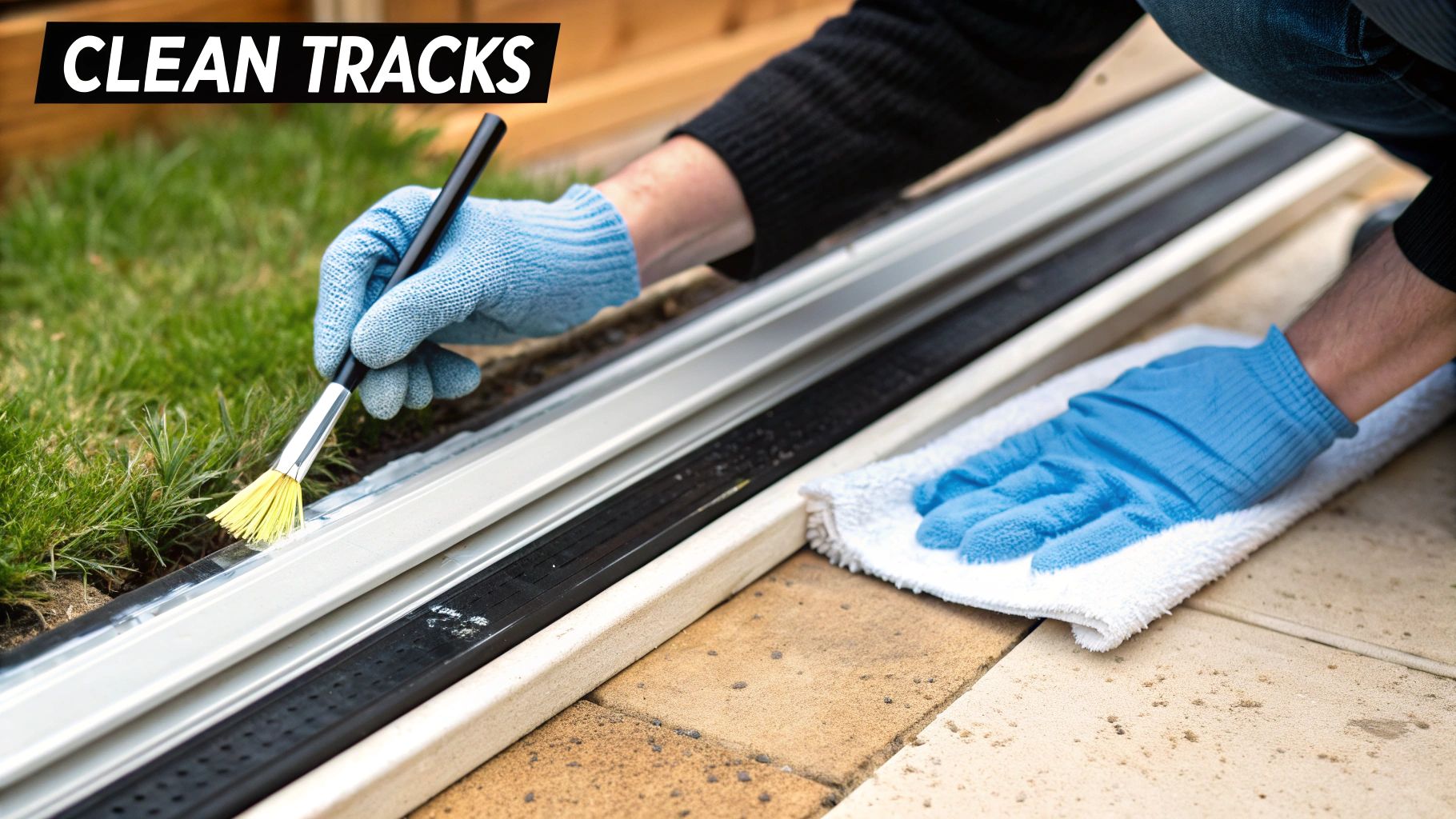
Keeping your sliding glass door gliding smoothly for years to come requires regular maintenance. Just like a website benefits from professional care, your sliding door needs attention too. Speaking of websites, you can find helpful information on website maintenance services. But for now, let's equip you with the right tools to keep your sliding door in top shape. This isn't about collecting every gadget imaginable; it's about having the essential tools that make maintenance easy and efficient.
Must-Have Tools for Effective Maintenance
The right tools can transform a maintenance session from a tedious chore into a quick, satisfying task. This means having the proper cleaning solutions, lubricants, and tools for small adjustments on hand.
-
Vacuum with a crevice tool: Essential for clearing debris from the tracks. A handheld vacuum is a good alternative if you're on a budget.
-
Stiff-bristled brush (old toothbrush): Perfect for scrubbing away stubborn dirt in those hard-to-reach spots around the rollers and frame.
-
Cleaning solution: A simple mix of mild detergent and water is highly effective. Avoid harsh abrasive cleaners which can damage the frame and track.
-
Lubricant: Silicone-based lubricants are your best bet. They don't attract dust and grime like oil-based products.
-
Screwdriver set: A must-have for tightening loose screws and making minor hardware adjustments.
-
Weatherstripping: Keep some replacement weatherstripping handy for quick fixes and improved insulation.
Specialized Tools for Advanced Maintenance
For more complex maintenance tasks or doors with specific requirements, some specialized tools can prove incredibly valuable.
-
Track alignment tool: This tool ensures your tracks are perfectly straight and level, allowing your door to glide effortlessly.
-
Roller replacement tool: Makes replacing worn-out rollers a much easier process.
-
Glass cleaner: A quality glass cleaner will keep your glass panels sparkling.
-
Safety glasses and gloves: Always protect your hands and eyes when working with cleaning solutions, lubricants, or making repairs.
Before we discuss building your toolkit, let's look at the essential tools in more detail. The following table provides a comprehensive overview of tools and their uses for sliding glass door maintenance.
Essential Sliding Glass Door Maintenance Tools
| Tool | Purpose | Approximate Cost | Professional/DIY Usage |
|---|---|---|---|
| Vacuum with crevice tool | Removing debris from tracks | $30 - $150 | Both |
| Stiff-bristled brush | Cleaning tight corners and rollers | $1 - $5 | Both |
| Cleaning solution (mild detergent and water) | General cleaning of frame and track | $5 - $10 | Both |
| Silicone-based lubricant | Lubricating tracks and rollers | $5 - $15 | Both |
| Screwdriver set | Tightening screws and adjusting hardware | $10 - $30 | Both |
| Weatherstripping | Replacing worn or damaged weatherstripping | $10 - $25 per roll | Both |
| Track alignment tool | Straightening and leveling tracks | $20 - $50 | Primarily Professional |
| Roller replacement tool | Removing and installing rollers | $15 - $30 | Primarily Professional |
| Glass cleaner | Cleaning glass panels | $5 - $15 | Both |
| Safety glasses and gloves | Protecting eyes and hands | $5 - $20 | Both |
As the table shows, a range of tools can assist in maintaining your sliding glass door. From simple cleaning tools to more specialized equipment, selecting the right tools for your needs will ensure your door remains in optimal condition.
Building Your Toolkit: Budget vs. Professional
Building a useful toolkit doesn't have to be expensive. Many basic tools are common household items. Investing in higher-quality, specialized tools might be a good idea for more frequent or complex maintenance. Better tools can offer improved performance and last longer. Consider how often you perform maintenance and your budget when choosing your tools. Prioritizing safety is paramount, especially when working with glass. Always wear appropriate protective gear like gloves and safety glasses.
Track Cleaning Mastery: The Foundation of Door Performance
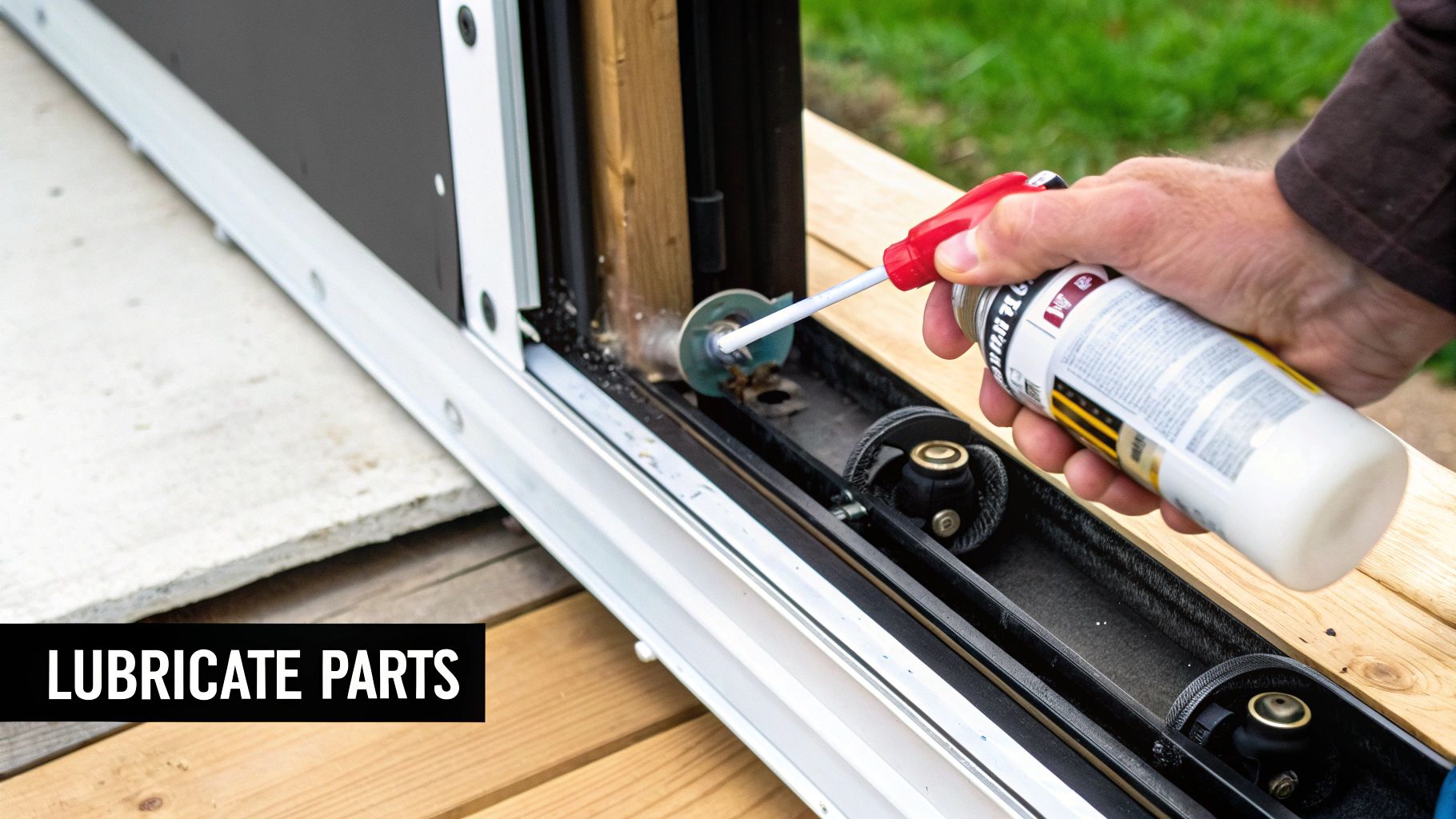
Clean tracks are essential for smooth sliding glass door operation. This often overlooked maintenance task is crucial for preventing problems like sticking, jamming, and premature wear. Mastering track cleaning can significantly extend the life of your sliding glass door, ensuring effortless operation for years.
Understanding Your Tracks: Materials and Maintenance Needs
Different track materials require different cleaning methods. Aluminum tracks are susceptible to oxidation and might need specialized cleaners to remove corrosion. Vinyl tracks are generally easier to clean but can become brittle, so use gentle solutions. Steel tracks are durable but prone to rust, especially in coastal environments. Knowing your track material helps you choose the right cleaning products and techniques.
The Quick Clean: Maintaining Momentum
Regular quick cleans are essential for preventative maintenance. Use a vacuum cleaner with a crevice tool to remove loose debris. For instance, a quick sweep once a week prevents dirt buildup. Wipe down with a damp cloth and mild detergent to remove lingering grime. This simple routine drastically reduces the need for deeper cleaning. For more tips, see our guide: How to master....
Deep Cleaning: Reviving Neglected Tracks
Even with regular quick cleans, grime can build up. A stiff-bristled brush, like an old toothbrush, is great for dislodging stubborn dirt. Specialized track cleaning tools can reach tight spots. For heavy grime, use a cleaner designed for your track material. Rinse thoroughly after cleaning to remove any residue.
Tackling Tough Challenges: Corrosion, Pests, and More
Coastal environments can cause salt buildup and corrosion on metal tracks. A specialized rust remover might be needed. Pest infestations can also occur, especially in warmer climates. Regular cleaning and sealing gaps around the tracks can deter pests. Consider using natural pest deterrents around the door frame.
Preventative Measures: Minimizing Future Cleaning
Preventing dirt buildup is the best way to minimize cleaning. Door sweeps or brush seals can significantly reduce debris entering the tracks, meaning less frequent cleaning and a longer lifespan for your door. Regularly trimming vegetation near the door also helps. The automatic sliding door market, often linked to glass door systems, is expected to reach $3.28 billion by 2029, growing at a 5.9% CAGR. Maintenance accounts for 15-20% of total ownership costs. Learn more about the automatic sliding door market trends.
The Payoff: Smooth Operation and Extended Lifespan
Consistent track cleaning ensures smooth door operation and extends its lifespan. Clean tracks reduce friction and wear on the rollers, minimizing costly repairs. This leads to long-term savings and optimal door performance for years. Check out our guide on How to master... for more maintenance tips.
Roller Revival: Transforming Door Movement Without Replacement
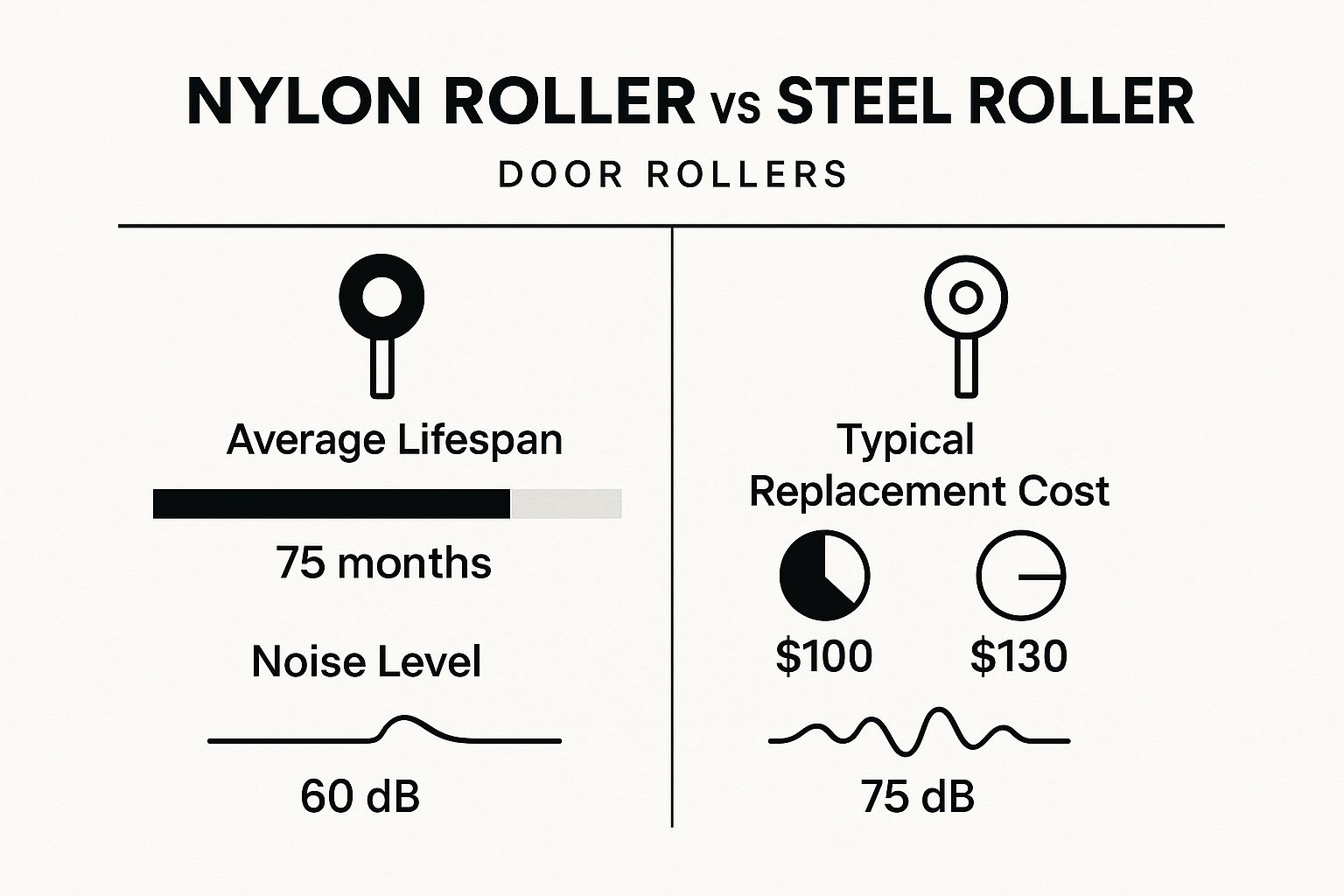
The small rollers within your sliding glass door carry a surprising amount of weight. These often-overlooked components are crucial for smooth and easy operation. This section explores the importance of roller maintenance, helping you troubleshoot potential problems and offering solutions for a quiet, effortless glide. For more information, check out this resource: How to master...
Identifying Roller Issues: Signs of Wear and Tear
Before your sliding glass door becomes a major headache, learn to spot the early warning signs of roller trouble. One telltale sign is a change in how the door moves. Does it stick, hesitate, or need an extra push? These could all indicate worn rollers.
Pay attention to any unusual sounds too. Squeaking, grinding, or rumbling noises often suggest the need for lubrication or even replacement. Finally, take a look at the rollers themselves. Look for visible wear, like flattening or chipping, and check for debris buildup around the roller assembly.
Maintenance vs. Replacement: Making the Right Call
Deciding whether your rollers need a little TLC or a complete overhaul depends on how bad the problem is. If you catch it early, cleaning and lubrication might be enough. But if the rollers are significantly worn, cracked, or broken, replacement is the best way to go.
To help you decide, take a look at the following table which provides a simple diagnostic framework. It matches common issues with the appropriate solutions, empowering you to take the right action.
| Issue | Solution |
|---|---|
| Door sticks slightly, occasional squeaking | Clean and lubricate rollers and tracks |
| Door sticks frequently, loud squeaking or grinding | Clean and lubricate; consider roller adjustment |
| Door jumps or derails from the track, visible roller damage | Replace rollers |
| Door difficult to move, significant noise, visible wear | Replace rollers and potentially tracks |
This table provides a quick and easy reference guide for common sliding door roller issues. It allows you to quickly assess the problem and determine the best course of action.
Extending Roller Life: Lubrication and Adjustment
Regular lubrication is essential for keeping your rollers in top shape and ensuring your door glides smoothly. Silicone-based lubricants are recommended because they resist dust and dirt buildup. Avoid oil-based products, as these can attract debris and actually hinder performance.
Apply the lubricant directly to the rollers and the track, making sure it's evenly distributed. If your door is sagging slightly, you might need to adjust the rollers. This usually involves tightening or loosening screws on the roller assembly to get everything aligned correctly.
Roller Replacement: A Step-by-Step Guide
If your rollers are beyond repair and need replacing, follow these steps:
- Carefully remove the sliding door from the track: This usually involves lifting the door and pulling the bottom out.
- Access the roller assembly: You might need to remove screws or clips.
- Remove the old rollers: Pay close attention to the type of rollers and their orientation so you can install the new ones correctly.
- Install the new rollers: Make sure they are secure.
- Reinstall the door: Align the rollers with the track and carefully lower the door back into place.
- Test the door's movement: Make sure it moves smoothly and quietly.
While these steps seem simple, the process can be tricky depending on your specific door model. Consult your door's manual for detailed instructions or call a professional if you're unsure.
Visualizing Roller Lifespan: The Impact of Maintenance
The data chart below illustrates the average lifespan of sliding glass door rollers under different maintenance routines. It clearly shows how regular cleaning and lubrication can dramatically extend roller lifespan, sometimes doubling or even tripling the time between replacements. Doors that receive minimal care (the "Low Maintenance" bar) typically last only 3-5 years, while those with consistent upkeep (the "High Maintenance" bar) can last 8-12 years. The striking difference between these scenarios highlights the major impact of proactive maintenance.

The chart visually demonstrates the significant impact that regular maintenance can have on the lifespan of your sliding glass door rollers. Investing a little time in cleaning and lubrication can pay off big time, saving you money and hassle in the long run.
Sliding Door Roller Comparison
To help you choose the right rollers for your sliding door, the following table compares different roller types, materials, and their suitability for various door weights and usage patterns.
| Roller Type | Material | Weight Capacity | Durability | Noise Level | Cost Range | Best For |
|---|---|---|---|---|---|---|
| Steel | Steel | High | High | Moderate | Low - Medium | Heavy doors, high-traffic areas |
| Nylon | Nylon | Medium | Medium | Low | Low | Lighter doors, moderate traffic |
| Plastic | Plastic | Low | Low | Low | Very Low | Lightweight doors, low traffic |
| Stainless Steel | Stainless Steel | High | Very High | Low | High | Coastal environments, high-end doors |
This table summarizes the key characteristics of different roller types, making it easier to select the best option for your specific needs. Choosing the right roller can significantly impact the performance and lifespan of your sliding door.
Weatherstripping Wisdom: The Secret to Energy Efficiency
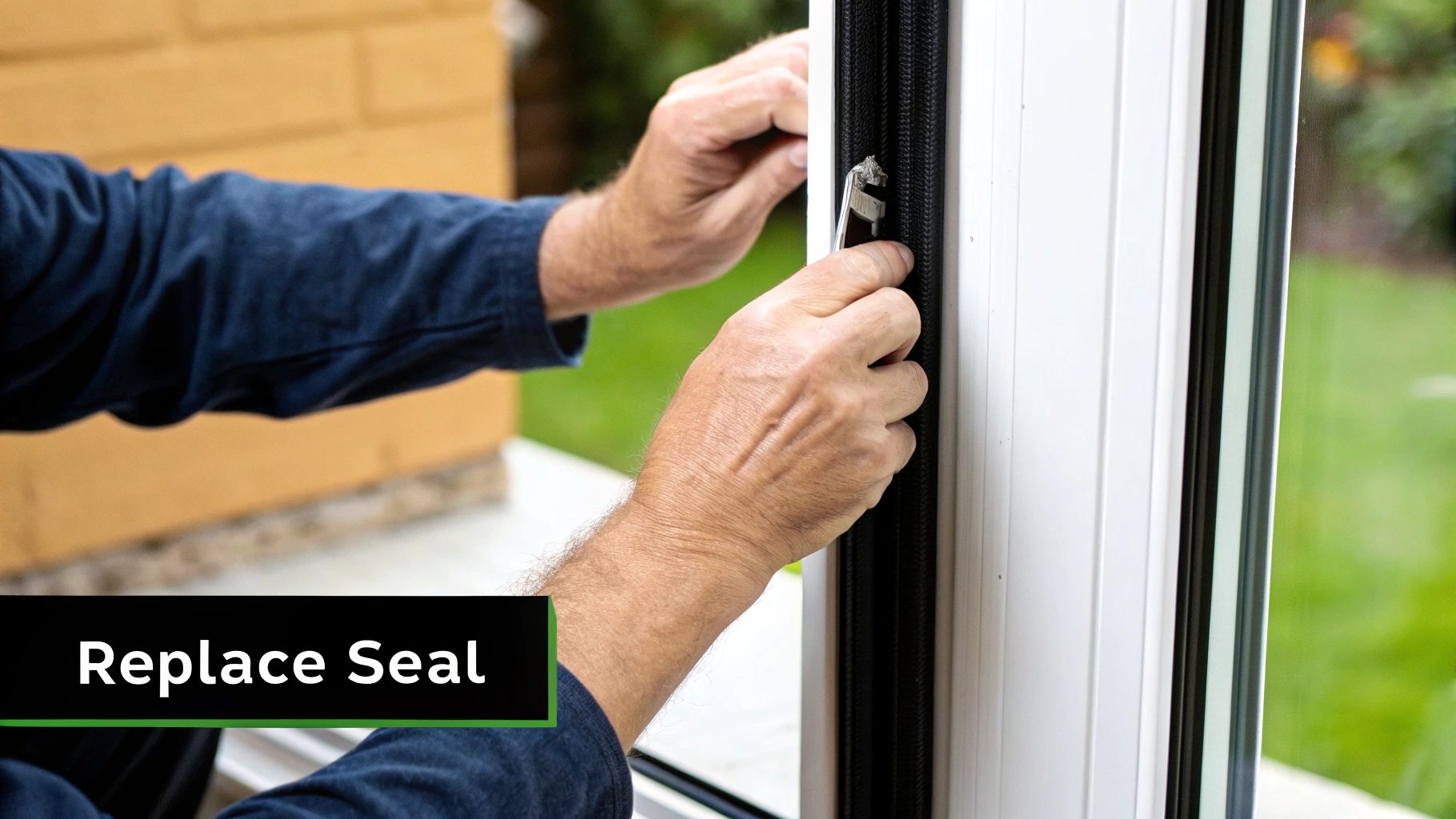
Your sliding glass door's weatherstripping plays a crucial role in maintaining a comfortable and energy-efficient home. It acts as a seal, preventing drafts and reducing energy loss by helping to maintain consistent indoor temperatures. Let's explore the importance of weatherstripping and how proper care can significantly impact your home's energy performance.
Understanding Weatherstripping Types
Several types of weatherstripping are available, each with unique characteristics and maintenance needs. Brush seals, with their fuzzy texture, offer excellent draft protection. Compression seals, typically made of foam or rubber, compress when the door closes, effectively blocking air leaks. Interlocking seals, true to their name, interlock to create a tight barrier against the elements. Knowing your weatherstripping type is the first step to effective maintenance.
Inspecting Your Weatherstripping: Spotting the Signs of Trouble
Regular inspections are crucial for catching weatherstripping issues early. Look for visible signs of wear like cracks, tears, or gaps. Also, check for brittleness or compression, which can compromise the seal's effectiveness and lead to drafts.
Air movement around the door frame or condensation on the glass could signal a failing seal. For a deeper dive into weatherstripping and other maintenance tips, check out this resource: How to master....
Cleaning and Maintaining Your Weatherstripping
Regular cleaning helps prolong the life of your weatherstripping. A simple solution of mild detergent and water can remove dirt and debris. Avoid harsh chemicals, which can damage the material. Lubricating the seals with a silicone-based lubricant can prevent drying and cracking, especially for compression seals that rely on flexibility.
Replacing Worn Weatherstripping
If your weatherstripping is beyond repair, replacing it is a manageable DIY project. Accurate measurements are key to ensuring a proper fit. Replacement weatherstripping is readily available at most hardware stores. Remove the old weatherstripping, clean the surface, and apply the new seal, ensuring a snug fit for optimal performance.
Upgrading Your Weatherstripping: Boosting Energy Performance
Upgrading to high-performance weatherstripping can dramatically enhance your door's energy efficiency. Silicone or EPDM rubber offer exceptional durability and sealing properties, withstanding temperature fluctuations and providing a tighter seal against drafts. This can lead to lower energy bills, a more comfortable home, and less strain on your HVAC system. It can also help minimize noise infiltration.
The Long-Term Benefits of Weatherstripping Maintenance
Maintaining and upgrading your sliding glass door's weatherstripping creates a powerful defense against energy loss. This translates to noticeable savings on energy bills, a more comfortable living environment, and a longer lifespan for your HVAC system. Investing in this often-overlooked aspect of home maintenance provides significant long-term benefits.
Glass Panel Perfection: Maintenance Beyond Just Cleaning
Keeping your sliding glass door's expansive glass pristine involves more than just wiping it down. This section explores the specific care needed to maintain both the beauty and smooth operation of your glass panels.
Specialized Cleaning Techniques for Different Glass Types
Different types of glass and coatings require specific cleaning methods. Tempered glass, often used in sliding doors, is stronger than standard glass, but it can react poorly to certain chemicals. Low-E coatings, designed for energy efficiency, need gentle cleaning solutions to prevent damage. Always consult your manufacturer's instructions for cleaning your particular glass type.
Addressing Persistent Problems: Hard Water Stains and More
Sliding glass doors often encounter tougher cleaning challenges than everyday dirt. Hard water stains, salt residue (common in coastal regions), and airborne pollutants can leave a stubborn film that standard glass cleaners can’t handle. Fortunately, there are specialized cleaning products designed to tackle these problems. A simple solution of vinegar and water can be effective for hard water stains. For tougher grime, a paste of baking soda and water can work wonders.
Inspection Protocols: Detecting Early Signs of Damage
Regularly inspecting your glass panels is vital for catching potential problems early. Look closely for signs of seal failure, such as condensation between the panes. Also, check for delamination, where the glass layers separate, creating a hazy look. Small stress cracks, often barely visible, can worsen if ignored. Early detection allows for timely repairs, preventing more extensive and costly damage down the line.
Protective Measures: Films and Coatings for Enhanced Performance
Protecting your glass panels extends beyond cleaning. Specialized films and coatings can significantly improve performance and ease maintenance. Security films strengthen the glass, increasing resistance to breakage. 3M Security Films are a popular choice for added safety. UV-blocking films reduce the sun’s fading effects on furniture and flooring. Hydrophobic coatings repel water and dirt, simplifying cleaning. These protective measures not only preserve your door’s appearance but also enhance its functionality, adding value to your home.
When considering these options, weigh the cost against the benefits. For instance, while security film adds valuable protection, it might not be necessary for everyone. The cost savings from a hydrophobic coating, by reducing cleaning time and frequency, might outweigh its initial price over the long term.
When to Call the Professionals: Making Smart Service Decisions
Even with diligent DIY sliding glass door maintenance, some situations demand a professional's touch. Knowing when to call an expert can save you time, money, and a lot of frustration. This section helps you understand the difference between manageable upkeep and issues best left to the pros.
Recognizing the Need for Professional Help
While cleaning and lubrication are usually within a homeowner's skillset, some problems require specialized knowledge. For example, a door repeatedly jumping its track may indicate a serious alignment problem needing professional adjustment. Persistent drafts, even after replacing the weatherstripping, could signal a larger structural issue.
Other signs you should call a professional include:
- Difficulty opening or closing the door, even after cleaning and lubricating the tracks and rollers. This could point to warped tracks, damaged rollers, or other internal issues.
- Visible damage to the door frame or glass panels. These often require professional repair or replacement for safety and proper operation.
- Water leaks or drafts around the door frame, despite intact weatherstripping. This might indicate a failing seal or structural problems needing a pro.
- Fogging between glass panes in double-paned doors. This signals a broken seal, requiring professional replacement to regain insulation.
Selecting a Qualified Service Provider
Choosing the right professional for your sliding glass door repair or replacement is crucial. Ask friends, neighbors, or check online review platforms like Yelp for recommendations. Prioritize established businesses with proven track records. When speaking to potential service providers, ask about their experience with your specific door type and brand. For more information on maintenance, check out this article on sliding glass door maintenance. Always get detailed quotes outlining the work and costs involved.
Red Flags to Watch Out For
Be cautious of contractors who:
- Pressure you into quick decisions or offer unusually low prices. This could mean they cut corners or use subpar materials.
- Lack proper licensing and insurance. This puts you at risk if accidents or damage occur.
- Provide vague estimates without itemized details. This can lead to unexpected costs down the line.
- Fail to address your questions or concerns thoroughly. Open communication is key for a good working relationship.
Typical Cost Ranges for Common Services
Understanding typical costs helps you budget and avoid overpaying. Roller replacement usually costs between $75 and $200 per roller, including labor. Track repairs range from $100 to $300, depending on the damage. Keeping glass panels clean is essential; for tips on cleaning security screens, see this guide on Cleaning Your Security Screens. Full door replacements can vary significantly, from $1,000 up to $3,000 or more, based on size, material, and features.
Maintenance Contracts: Are They Right for You?
Some homeowners choose maintenance contracts for regular inspections and preventative services. These often include track cleaning, roller lubrication, and weatherstripping checks. They offer convenience and peace of mind but come with recurring fees. Consider your door usage and potential maintenance needs to see if a contract fits your situation.
Ready for an upgrade? Visit Gladiator Window and Doors today! We offer the lowest prices in the USA on custom-made, thermally rated windows and doors. Get a free quote and see how we can transform your home.









